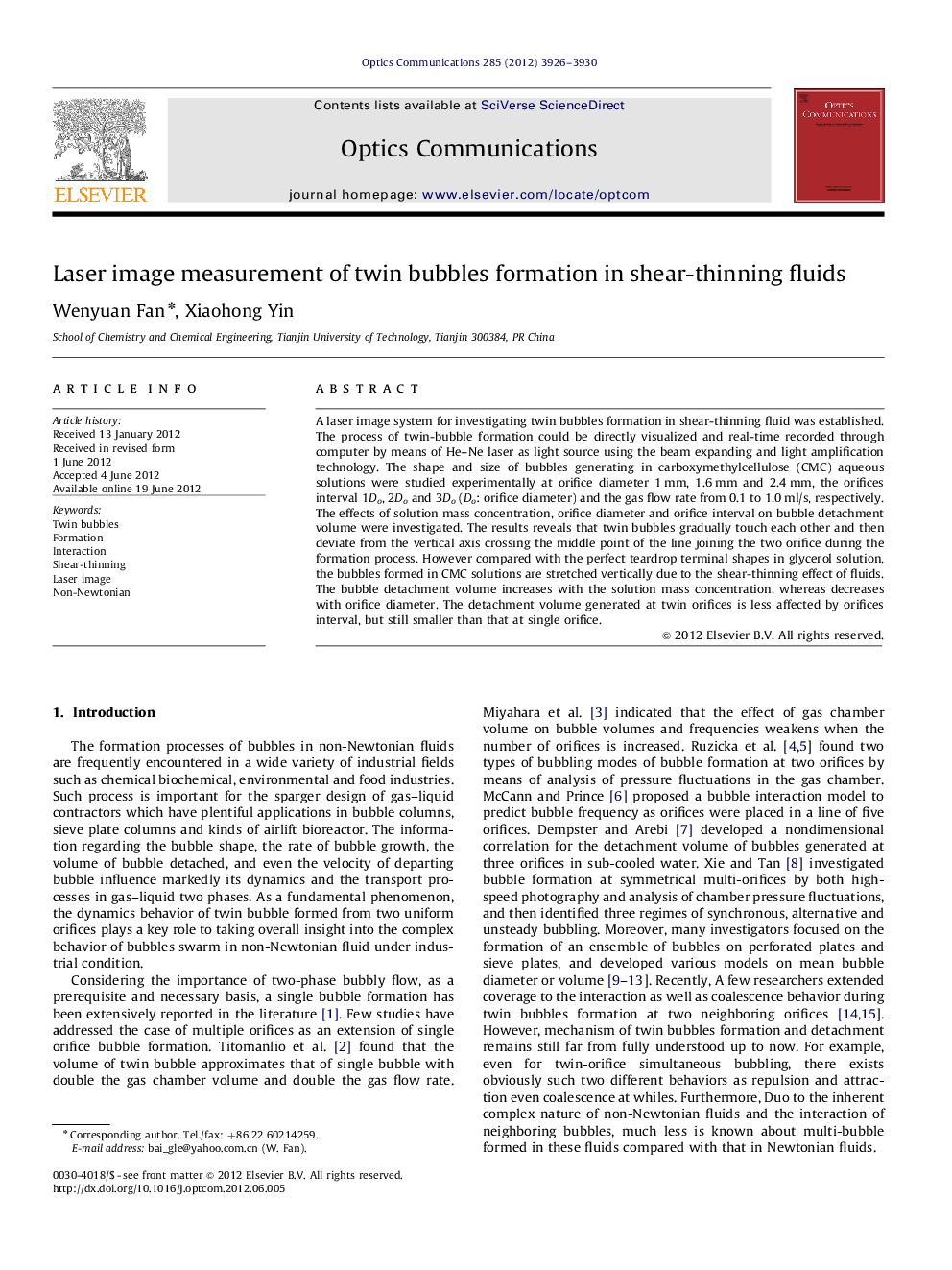| Article ID | Journal | Published Year | Pages | File Type |
|---|---|---|---|---|
| 1535831 | Optics Communications | 2012 | 5 Pages |
Abstract
A laser image system for investigating twin bubbles formation in shear-thinning fluid was established. The process of twin-bubble formation could be directly visualized and real-time recorded through computer by means of He-Ne laser as light source using the beam expanding and light amplification technology. The shape and size of bubbles generating in carboxymethylcellulose (CMC) aqueous solutions were studied experimentally at orifice diameter 1Â mm, 1.6Â mm and 2.4Â mm, the orifices interval 1Do, 2Do and 3Do (Do: orifice diameter) and the gas flow rate from 0.1 to 1.0Â ml/s, respectively. The effects of solution mass concentration, orifice diameter and orifice interval on bubble detachment volume were investigated. The results reveals that twin bubbles gradually touch each other and then deviate from the vertical axis crossing the middle point of the line joining the two orifice during the formation process. However compared with the perfect teardrop terminal shapes in glycerol solution, the bubbles formed in CMC solutions are stretched vertically due to the shear-thinning effect of fluids. The bubble detachment volume increases with the solution mass concentration, whereas decreases with orifice diameter. The detachment volume generated at twin orifices is less affected by orifices interval, but still smaller than that at single orifice.
Related Topics
Physical Sciences and Engineering
Materials Science
Electronic, Optical and Magnetic Materials
Authors
Wenyuan Fan, Xiaohong Yin,
